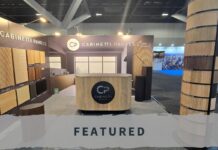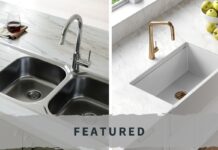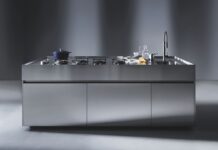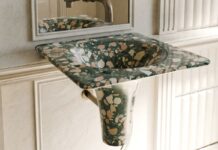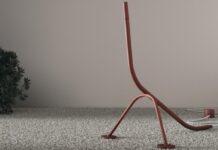A good rangehood is essential for any kitchen, especially if your client cooks frequently. It is a device that is installed over stoves or cooktops, incorporating a motorised fan to extract cooking grease, smoke, steam and odours.

Airborne pollutants are pulled through and captured in filters before the exhaust is either recirculated back into the kitchen or more ideally, vented through the ducting to the outdoors. When working effectively, a rangehood helps to maintain a cleaner, healthier and more comfortable living environment indoors.

Here are our top 10 tips if you’re in the market for the perfect rangehood:
- Size: Rangehoods should ideally be larger than the cooking zone underneath to ensure optimal capture efficiency. Most rangehood types are available in 60 or 90cm width – covering the most common cooktop widths. Schweigen also has options for 120, 150 and 200cm width to cater for different install environments and requirements. Some models even come with enlarged depths to fit into deeper cabinetry for better coverage over the cooktop. The distance between the cooktop and the rangehood is just as important. Do refer to the user manual for the recommended installation height to ensure optimal rangehood performance.
- Power: Rangehoods should have sufficient power to effectively capture and extract the smoke, steam, odours and airborne grease resulting from the style and intensity of cooking. Airflow rate is measured in cubic meters per hour (CMH) where 1 m3/h is equal to 1 cubic meter of air being moved in 1 hour. The higher M3/h a rangehood has, the more powerful the motor. Schweigen’s Isodrive® motor options include silent extraction ranges from 900-3200 m3/h.
- Ventilation Type: Rangehoods come in ducted or recirculating systems. Ducted rangehoods pass cooking vapours and by-products through filters before expelling it externally, outside the home through a duct system. Recirculating rangehoods use filters to trap pollutants, before cycling the filtered air back into the kitchen. Unlike ducted systems, ductless rangehoods do not deal with the moisture from cooking steam. While ducted rangehoods are generally considered more effective, recirculating models can be a viable option if duct installation is not possible. Read more on the benefits of ducted vs recirculating rangehoods.
- Design & Aesthetics: It is important that the rangehood options are carefully considered and planned for during the kitchen design stage so that adequate provisions may be made for its positioning and installation. Consider the style, finish and options available to find a rangehood that performs optimally within the kitchen, suits your client’s cooking needs and complements its overall aesthetics. Read up on tips to putting together a successful kitchen design.
- Noise Level: Rangehoods with offboard/external motors are preferred – as prolonged and excessive fan noise can be annoying, distracting, and unhealthy. This is especially pertinent as Australian homes become increasingly sealed with shared multi-purpose spaces. Look for silent rangehood models or at least models with a lower noise rating for a more peaceful living environment.
- Variable Fan Speeds: A good rangehood should have multiple fan speed settings to match different cooking needs and styles. Lower speeds are suitable for light cooking or steaming, while higher speeds are needed for heavy frying, grilling or high spice/strong odour cooking. Having the right mode for the job helps you maintain energy-efficiency.
- Energy Efficiency: Choosing a rangehood that performs energy-efficiently, and installing it correctly, means savings from reduced energy consumption and operating costs over time. The German-made Isodrive® motor is not only one of their quietest domestic extraction systems on the market, but it is also one of the most energy efficient. It achieves this by pulling cooking exhaust out of the kitchen with the motor located externally of the home – as compared with onboard models that need to first extract air through the filters, and then push it up against gravity through ducting to the outdoors. As a result, Schweigen silent rangehoods perform up to 3x more energy efficiently than conventional onboard rangehoods. Read more on offboard vs onboard rangehoods.
- Integrated Lighting: A good rangehood should have built-in lighting that provides adequate illumination over the stove area and gives an accurate colour rendering of the food being prepared. Nowadays, LED lights are increasingly being integrated into rangehoods because they’re energy-efficient and provide long-lasting, bright, focused task lighting.
- Safety Features: Look for rangehoods with built-in safety features, such as automatic shut-off timers or sensors that detect excessive heat or smoke. These features help prevent energy wastage and accidents. You might be pleased to know that all Schweigen silent rangehoods come with free Schweigen SteelFlex™ high performance safety ducting that are fire/pest/crush proof and guaranteed for life.
- Ease of Use & Cleaning: The rangehood should have readily accessible, visible and user-friendly controls for convenient operation. It should also be easy to clean and maintain, with accessible parts and dishwasher-safe baffles/filters where suitable.

By considering the above, we hope that the next rangehood you specify helps your client keep their home fresher and healthier for longer. To find out more, check out our Silent Rangehood Buying Guide or reach out to a Schweigen Product Expert today at 1300 881 693 for a free consult.


